High-performance insulation materials enable much thinner profiIes to be used than their counterpart products. Sweett Group investigates if the benefits from the use of these thinner insulation materials outweigh the costs
01 / Introduction
It is a January tradition to discuss ways of getting thinner - and one that we’re joining in with. But fear not, this article isn’t a crash course guide to weight loss. Instead, it looks at the use of high-performance insulation materials, which enable much thinner profiles than the use of traditional counterparts. These thinner products typically carry a cost premium; this article investigates whether the cost uplift is offset by the value of the additional space created.
In September 2014, this publication released a CPD module (number 23) on high-performance insulation for curtain wall facades. It looked at vacuum insulated panels (VIPs) and aerogels as innovative options offering excellent thermal resistance even at low thicknesses. Alongside these emerging products, manufacturers are offering new rigid phenolic insulants which are thinner than those used previously, without compromising the thermal performance.
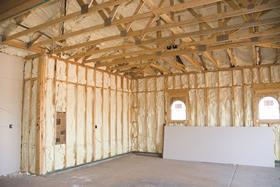
02 / Benefits of thinner insulation
There are several benefits from the use of thinner insulation materials, albeit some are more difficult than others to quantify. Direct benefits include:
- Creation of additional floor area
- Increased loading capacity in freight vehicles
- Reduction in site storage space required
Other benefits include time saving (as some of the insulation materials are likely to be best incorporated as part of a modular construction approach).
Inevitably there have been a few teething problems - feedback from some retrofit projects using VIPs highlighted the risk of damage to the panels as installers did not appreciate the care with which they need to be handled. Notably, once the vacuum has been punctured it is no longer an as effective insulant. However, at the time of writing, manufacturers are working on honeycombed vacuums - eg. a series of vacuums - which means puncturing one does not make the whole panel defunct.
Figure 1 - Indicative Lambda value of different insulation products
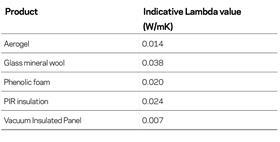
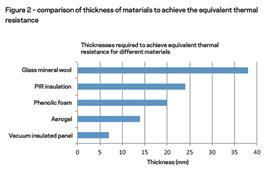
03 / Wider considerations
It should be noted that while cost and thermal performance are key drivers behind selection of different insulation materials, there will be a number of factors influencing decision making. These include: fire resistance; environmental credentials (eg. embodied carbon, recycled content, reusability, global warming potential, etc); compressive strength; mass; water resistance and ease of use. Therefore the application in question will influence the selection process and the overall suitability of a product.
04 / Investigating the value of space
To put this to the test, the following section investigates how the use of thinner products increases space within a commercial office environment and the resultant impact this has on asset values.
While novel products such as VIPs and aerogels are increasing in popularity, this analysis focuses on high-performance phenolic foam in comparison to glass mineral fibre and rock mineral wool due to their overall market presence.
Methodology
The analysis was split into the following stages:
1. Comparative scenarios
Select comparative wall build-up scenarios between high performance insulation and traditional approach - investigating the overall thickness differential.
2. Cost analysis
Analyse the cost differences between each scenario (eg. materials, labour, sundries, etc).
3. Develop model and generate database
Model a number of variables (eg. size and layout of building, location, rental value, material cost); run analysis and incorporate results into a cost, space and returns database.
4. Analyse the database
The results within the database were investigated to determine the following:
- Cost uplift: the additional cost of the premium insulation
- Capital value of space: the net money which would be received if the floor space was let to market (once taxes and fees have been accounted for).
The capital value of space was investigated using a range of variables, namely the rental income ranging from £50 - £750/m2/annum and the implicit yield (see box) ranging from 2.5 - 12.5%.
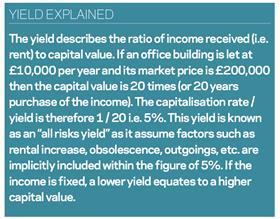
- Return on investment (ROI): The overall efficiency of an investment (the ROI was determined by dividing the capital value of space by the cost uplift).
5. Investigate case study scenarios
Verify approach using real commercial office schemes which Sweett Group had worked on as the cost consultant.
05 / Analysis 1 - Blockwork cavity wall construction
A double leaf brick and block work construction with air cavity (thickness = 50mm) and phenolic product (thickness = 65mm). To achieve a calculated U-value of 0.22 W/m2K.
The comparative detail replaces the air cavity and phenolic product with a full cavity fill glass mineral fibre insulation product (thickness = 155mm). This gives an overall 40mm thicker construction detail when compared to the phenolic product.
- The total cost of the wall using the phenolic product is £223/m2
- The total cost of the wall using the standard product is £204/m2
This represents a cost uplift of 9%.
Figure 2: Blockwork cavity wall construction - Return on investment versus rental income for different yield scenarios:

05A / Case study 1: Business centre in Scotland
This case study is a new build low-rise business centre located in a regenerated rural area with close links to the local city centre. The development is on the site of some existing agriculture buildings and will require new services brought to the site. The internal space will be fitted out to Cat-A.
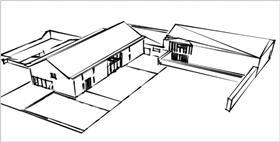
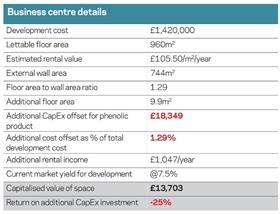
05B / Case study 2: London office / Retail
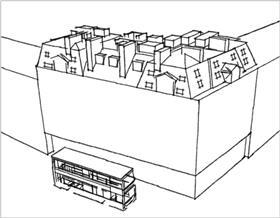

06 / Analysis 2 - Rainscreen warm wall construction
A rainscreen cladding with ventilated air cavity using a phenolic product (thickness = 120mm) mounted on a cement based substrate onto a steel frame. To achieve a calculated U-value of 0.22 W/m2K.
The comparative detail replaces the phenolic product with rock mineral wall insulation (thickness = 200mm). This gives an overall 80mm thicker construction detail when compared to the phenolic product.
- The total cost of the wall using the phenolic product is £360.50/m2
- The total cost of the wall using the standard product is £355.00/m2
This represents a cost uplift of 1.5%.
Figure 3: Rainscreen warm wall construction - Return on investment versus rental income for different yield scenarios:
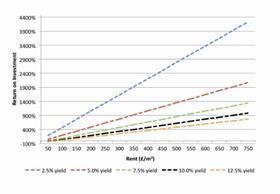
06A / Case study 3: Retail park in Scotland
The case study is a typical new build retail park centre located on the outskirts of a major city. The development comprises a single building split into five separate retail spaces that could be prospectively let individually. Each unit is fit-out to shell only. The development is on an existing site and as a result includes the demolition of existing buildings and re-landscaping, but does not require re-routing of services.
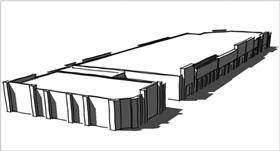

06B / Case study 4: Industrial and office unit in Wales
This case study is of large scale industrial/distribution unit located on the outskirts of a major city near a shipping port. The development comprises the demolition of existing site buildings, general site clearance and the development of a large industrial unit with car parking and access routes. The unit is 90% distribution space, 10% office space.


07 / Summary
The analysis has shown that in many development scenarios the additional cost of the thinner product is rapidly offset by the value of the additional space obtained. In some instances where there is a high implicit yield then high performance / thinner products are unlikely to be worth the extra outlay. Nevertheless, the analysis signifies that where space is at a premium there can be a business case for thinner insulation products despite their higher capital cost. As demand increases prices should decrease further making the business case even more favourable. Another area where thinner products are likely to be attractive is retrofit (particularly where internal wall insulation is required). Hopefully, these findings offer suitable incentives to go thin and at least in this instance it doesn’t involve multiple trips to the gym and a watchful eye on the diet!




























No comments yet